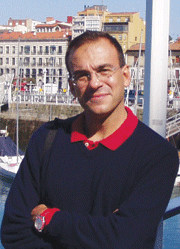E-Archive
Shot Peening in the Automotive Industry
in Vol. 16 - March Issue - Year 2015
Shot Peening In Automotive, The History And The Future

Mario Guagliano
As usual, every three years in the late summer, the International Conference on Shot (ICSP) peening takes place and makes possible both academics and industrial engineers in the field to meet and exchange ideas and opinions. Last summer the 12th Edition of the conference took place in Goslar, a wonderful historical town sited in Germany. Also, the weather was good, and the stay really pleasant for everyone.
Among the papers presented (more than one hundred!), many showed new results, new possible applications, original developments and other treatments as possible competitors of shot peening (or complementary to shot peening), but not all of them. In particular, I liked the plenary lecture given by prof. H. Wohlfarht of Technical University Braunschweig about the history of shot peening in Germany very much. Indeed, the contribution of the German Universities and Research Institutes is well known and I think that there are no relevant papers on shot peening that do not have any German milestone among the references. The presentation highlighted the events concerning shot peening in Germany, and then moved to the review of the activities of the Research Institutes: peen forming, use of different peening techniques, peening media and parameters, efficiency of shot peening on fatigue, corrosion fatigue, wear properties, special shot peening conditions for different structural elements; these are all subjects that have a strong pulse in Germany. Thank to these studies, the effect of the shot velocity, diameters hardness on the in-depth profile of the residual stress field induced by shot peening as well as the effect of those and other parameters on the surface work hardening and related parameters (i.e.: the FWHM in XRD measurements) are now well known. And also the derived treatment of "warm peening" was developed in Germany, University of Karlsruhe. As regards structural components, gears and springs as well as welded details have been the object of many investigations to set up the best combination of shot peening parameters.
Let me say that a great impetus to these research studies and advancements is related to the automotive industry, which strictly cooperated and supported the academia and the research institutes. Volkswagen, BMW, Daimler AC were mentioned during the presentations and took advantage from the results.
A natural question arising after the previous considerations is: what else is supposed to be done and explored in the near future? Everything seems to be done and shot peening seems to be becoming a routine treatment, with no need for further research. But, modern cars are rapidly changing and always present a large variety of more and more requirements: safety, environmental impact, climate comfort, and favourable cost of ownership as well as suitable driving performances are among them and require the appropriate use of advanced materials in combination with lightweight design. This means that new and severe in-service conditions are expected: if we want a safe, performing and light car, the materials must have superior properties and must be able to carry heavy loads. This is the driving force for developing new materials, but even in this case, the application of some surface treatments should result in improved strength at affordable cost. Why not shot peening, excellent in terms of flexibility and adaptability? Indeed, shot peening in its original idea has more than one competitor now and the final result is not known.
It is not an easy task: new, more resistant metal alloys result in harder surfaces and this means that new shot peening media must be developed to get the desired surface work hardening and residual stress field. At the same time, new shot peening devices should be designed and manufactured to use at best the new media with modified shot peening parameters. It is not easy, but it is challenging. It is a good opportunity to enlarge the fields of application of shot peening in the automotive field but, at the same time, it requires an additional effort in terms of research and development.
No, shot peening in this field is not a routine treatment: many advancements have to be done and much more effort is necessary to increase the possible application of shot peening and to make it a suitable treatment even for the new high- strength materials on-course for development. There is still great room for research and a lot of work has to be done, not only in Germany!
Shot Peening in the Automotive Industry
by Mario Guagliano
Contributing Editor MFN and
Associate Professor of Technical University of Milan
20156 Milan, Italy
E-mail: mario@mfn.li



























